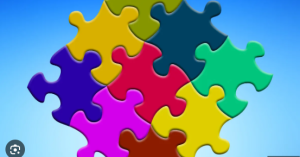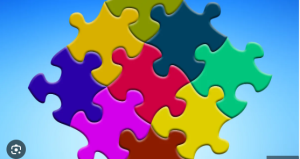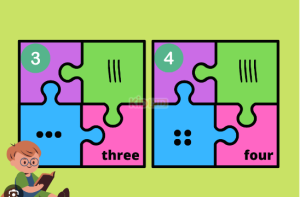Introduction (150 words): Puzzles have been an integral part of human history, intriguing minds and captivating individuals across civilizations. Their origins trace back to ancient times, where simple forms of puzzles emerged as tools for entertainment, education, and mental stimulation. Understanding the roots of puzzles unveils their significance in shaping cognitive skills and societal interactions.
1. Early Puzzles in Ancient Civilizations (300 words): Puzzles find their beginnings in ancient civilizations like Mesopotamia and Egypt, where enigmatic riddles and early forms of mechanical puzzles were prevalent. These challenges served both recreational and educational purposes, stimulating critical thinking and problem-solving abilities.
2. Puzzle Renaissance in Medieval Europe (350 words): The Middle Ages witnessed a resurgence of puzzles in Europe. Intricate mechanical puzzles and enigmatic conundrums became popular among nobility and scholars. These puzzles were often symbolic, representing moral or philosophical concepts, and were used as teaching tools in monasteries and schools.
3. Rise of Jigsaw Puzzles and Crosswords (400 words): The 18th and 19th centuries marked a significant shift with the invention of jigsaw puzzles. Originally created as educational tools, these puzzles evolved into popular pastimes, especially during the Victorian era. Simultaneously, the birth of crosswords in the early 20th century added a linguistic twist to the world of puzzles, engaging people through wordplay and vocabulary challenges.
4. Modern Innovations and Digital Puzzles (450 words): The advent of technology revolutionized puzzles, transitioning them from physical to digital platforms. Video games, mobile apps, and online puzzle communities introduced a new era of interactive and adaptive challenges. These innovations not only diversified puzzle formats but also expanded their accessibility to a global audience.
5. Psychological and Educational Significance (300 words): Beyond entertainment, puzzles hold immense psychological and educational value. Studies suggest that engaging in puzzles enhances cognitive abilities, improves memory, and fosters creativity. They are also employed in therapeutic settings, aiding in stress reduction and cognitive rehabilitation.
Conclusion (200 words): Puzzles have traversed through time, cultures, and technological advancements, leaving an indelible mark on human intellect and recreation. From their humble origins in ancient civilizations to their digital reinvention in the modern era, puzzles continue to captivate and challenge individuals worldwide. Their evolution mirrors our quest for mental stimulation and problem-solving, cementing their enduring place in human history.
Unraveling the Enigma: A Historical Journey into the Origins of Puzzles
Puzzles, those captivating mental challenges that test our wit and creativity, have a rich history that spans centuries. Their origins, rooted in ancient civilizations, reflect humanity’s innate fascination with problem-solving and intellectual stimulation.
1. Ancient Beginnings: Puzzles in Antiquity
Puzzles’ story commences in the cradle of civilization itself. Ancient civilizations, such as the Babylonians and Egyptians, indulged in rudimentary puzzles. These puzzles often took the form of riddles, enigmas, or simple physical challenges.
Riddles and Enigmas: In ancient Mesopotamia, riddles were prevalent, used to entertain and challenge the mind. The “Riddle of the Sphinx,” from Greek mythology, remains a notable example of this era’s fondness for enigmatic challenges.
Tangrams and Dissections: The Chinese tangram, originating around 1800 AD, consisted of seven geometric shapes forming a square. This puzzle tasked individuals with rearranging the pieces to create specific shapes, honing spatial awareness and problem-solving skills. Similarly, geometric dissections emerged in various cultures, where shapes were dissected and reassembled to form new figures.
2. Puzzles in the Middle Ages: The Rise of Mechanical Puzzles
The Middle Ages witnessed the emergence of mechanical puzzles, intricate devices designed to perplex and engage individuals.
The Trick Locks: These locks, prevalent during this period, were more than mere security measures. They were puzzles in themselves, requiring specific movements or a sequence of actions to unlock.
The Puzzle Boxes of Japan: In Japan, the intricate art of crafting puzzle boxes flourished. These boxes, crafted with exquisite precision, demanded a series of maneuvers to reveal their concealed compartments.
3. The Puzzle Renaissance: Evolution and Popularization
The Renaissance period marked a resurgence of intellectual pursuits, leading to the evolution and diversification of puzzles.
Jigsaw Puzzles: In the late 18th century, John Spilsbury, an English cartographer, introduced the first jigsaw puzzle. Originally used to aid geographical education, these puzzles evolved into leisure activities, featuring intricate images cut into interlocking pieces.
Crossword Puzzles: The early 20th century witnessed the birth of the crossword puzzle. Arthur Wynne, a British journalist, created the first crossword for a newspaper, igniting a crossword craze that persists to this day.
4. Modern Era and Digital Revolution
The advent of the digital age revolutionized the puzzle landscape, introducing new forms and platforms for engagement.
Electronic Puzzles: With the rise of computers and electronic devices, puzzles transitioned into the digital realm. Sudoku, Minesweeper, and various mobile app-based puzzles gained immense popularity, offering accessible challenges to a global audience.
Escape Rooms and Virtual Reality Puzzles: The 21st century witnessed the rise of immersive experiences like escape rooms, where participants solve a series of interconnected puzzles to “escape” a themed room. Virtual reality (VR) technology further amplified this trend, offering unparalleled interactive puzzle-solving experiences.
5. The Enduring Allure of Puzzles
In contemporary society, puzzles continue to captivate minds and transcend boundaries. They serve as educational tools, cognitive exercises, and sources of entertainment, catering to diverse age groups and preferences.
Educational Benefits: Puzzles foster cognitive skills, including critical thinking, problem-solving, and spatial reasoning, making them invaluable educational tools for children and adults alike.
Therapeutic Value: Beyond entertainment, puzzles have therapeutic benefits, aiding in stress relief, improving concentration, and enhancing mood by engaging the brain in a focused yet relaxing activity.
Unraveling the Origins: A Step-by-Step Journey into the History of Puzzles
Puzzles, those enigmatic and brain-teasing challenges, have fascinated humanity for centuries. The origins of puzzles trace back to ancient civilizations where these perplexing conundrums served as both entertainment and mental exercises. Let’s embark on a journey through time to unravel the captivating history of puzzles.
1. Ancient Beginnings:
Puzzles find their genesis in ancient civilizations like Egypt, Greece, and China. Egyptian hieroglyphs reveal evidence of early puzzles used for religious and educational purposes. Meanwhile, the Greeks experimented with geometric puzzles, laying the groundwork for mathematical problem-solving.
2. Tangrams and Chinese Puzzles:
China contributed significantly to the puzzle world with the invention of tangrams around 618-907 AD during the Tang Dynasty. These seven simple shapes formed a square and inspired countless geometric configurations, promoting spatial awareness and creativity.
3. European Renaissance and Mechanical Puzzles:
During the European Renaissance, mechanical puzzles gained popularity. Intricate wooden or metal constructions, like disentanglement puzzles and lock mechanisms, entertained the elite while testing their problem-solving skills.
4. Jigsaw Puzzle Emergence:
The 18th century witnessed the birth of the jigsaw puzzle. Initially created as educational tools for children, these puzzles evolved into complex, interlocking pieces, depicting elaborate images that captivated people of all ages.
5. Crossword Craze and Word Puzzles:
The 20th century brought about a surge in word-based puzzles. The crossword puzzle, invented by Arthur Wynne in 1913, quickly gained immense popularity, leading to the creation of various word games and brain-teasing challenges.
6. Digital Age and Modern Puzzles:
With the advent of computers and the digital age, puzzles transitioned into the virtual realm. Video games, mobile apps, and online platforms revolutionized puzzle formats, offering interactive and diverse challenges to a global audience.
7. Contemporary Puzzle Trends:
Today, puzzles encompass a wide array of forms and formats. Sudoku puzzles from Japan, logic puzzles, 3D mechanical puzzles, and escape room challenges represent only a fraction of the diverse puzzle landscape captivating enthusiasts worldwide.
8. Psychological and Educational Benefits:
Beyond entertainment, puzzles offer numerous cognitive benefits. They stimulate critical thinking, enhance problem-solving skills, promote patience, and even alleviate stress, making them popular in therapeutic and educational settings.
9. Future of Puzzles:
As technology advances, puzzles continue to evolve. Virtual reality (VR) puzzles, augmented reality (AR) challenges, and AI-generated puzzles are emerging trends reshaping the puzzle experience, promising innovative and immersive mental exercises.
10. Global Appreciation and Community:
Puzzles have transcended cultural boundaries, uniting people worldwide through shared enthusiasm. Online communities, puzzle clubs, and competitions foster a sense of camaraderie among puzzle enthusiasts, creating a vibrant and supportive community.



